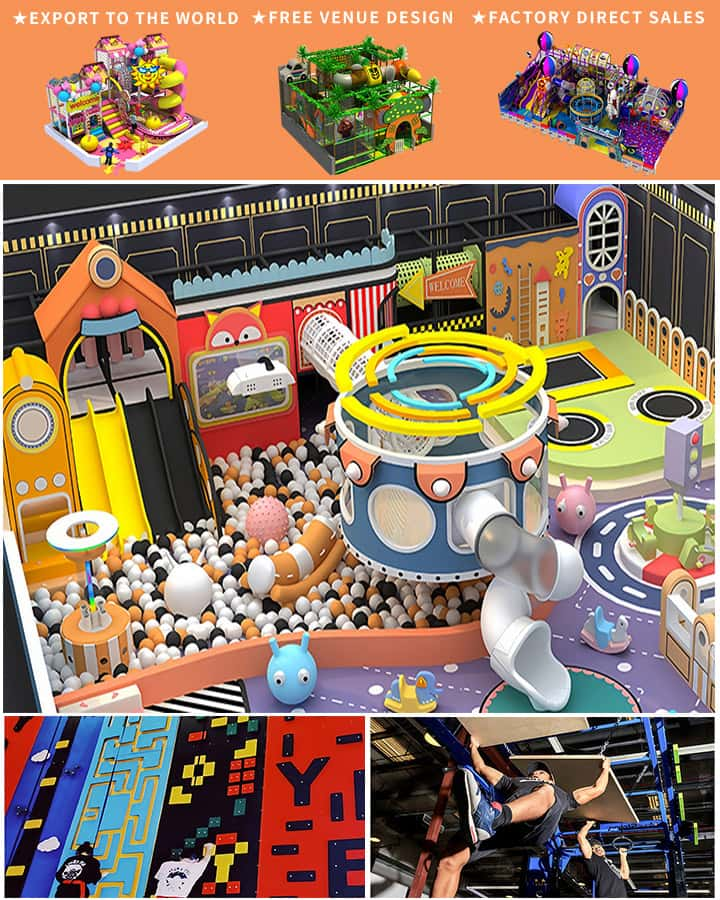In recent years, indoor trampoline parks have become increasingly popular destinations for family fun, fitness enthusiasts, and thrill-seekers of all ages. These vibrant venues offer a unique blend of excitement, exercise, and entertainment under one roof. A crucial factor in the success of any indoor trampoline park is the quality and variety of equipment it provides. This article will delve into some essential indoor trampoline park equipment that makes these venues so enticing.
1. Trampolines
At the heart of any indoor trampoline park are the trampolines themselves. There are several types of trampolines designed for different uses:
Recreational Trampolines
These are perfect for casual jumping. They usually have padded edges and safety nets to prevent accidents and injuries.
Performance Trampolines
For those looking for a more intense workout or competitive edge, performance trampolines are designed to accommodate advanced jumpers. They often lack the padding found on recreational models for better spring and height.
Foam Zones
Foam pits filled with soft foam blocks provide a safe landing space, making it possible to perform flips and tricks without fear of injury.

2. Sponge Pit
The sponge pit consists of a large, deep pit filled with foam cubes. Jumpers can leap off elevated platforms into the pit, ensuring a soft landing. This setup is particularly popular for practicing stunts and acrobatics.
3. Basketball Hoops and Slam Dunk Zones
Combining basketball with trampolines creates an exhilarating experience. Elevated hoops allow jumpers to achieve slam dunks with ease, adding an extra layer of fun and athleticism. These zones are equipped with professional-grade hoops and durable mats.
4. Dodgeball Courts
Dodgeball on trampolines adds a new dimension to the classic game. With walls and ceilings covered in trampolines, players can bounce off surfaces, making dodges and throws even more dynamic and entertaining. Padded floors ensure safety during play.
5. Ninja Courses
Inspired by American Ninja Warrior TV shows, indoor trampoline parks often feature ninja courses. These obstacle courses challenge participants’ strength, agility, and endurance. They typically include elements like rope climbs, balance beams, and swinging rings.
6. Climbing Walls
Vertical adventures are also part of the attraction. Some indoor trampoline parks have climbing walls, either with or without the aid of trampolines beneath them. These walls come in various levels of difficulty, catering to beginners and experienced climbers alike.
7. Interactive Games and Technology
Many modern indoor trampoline parks incorporate interactive technology to enhance the experience. Arcade games, virtual reality setups, and laser tag are common additions that provide a break from bouncing activities while keeping the fun going.
8. Wipeout Zones
For those brave enough, wipeout zones simulate slipping and sliding fun. These areas are covered with specialized materials that make it easy to lose balance, adding an element of unpredictability and laughter to the mix.
Maintenance and Safety Considerations
While investing in high-quality indoor trampoline park equipment is fundamental, maintaining these facilities is equally important. Regular inspections, timely repairs, and proper cleaning ensure both safety and longevity of the equipment. Moreover, staff training on emergency protocols and customer safety guidelines is paramount.
Conclusion
Indoor trampoline parks provide an exceptional venue for fun, fitness, and social interaction. The variety of equipment available ensures there’s something for everyone, from casual jumpers to aspiring gymnasts. As these parks continue to evolve, innovations in equipment design and safety standards promise even more exciting experiences for visitors worldwide. Whether you’re opening a new park or simply curious about what makes these places tick, understanding the diverse range of indoor trampoline park equipment is key to appreciating all they have to offer.




